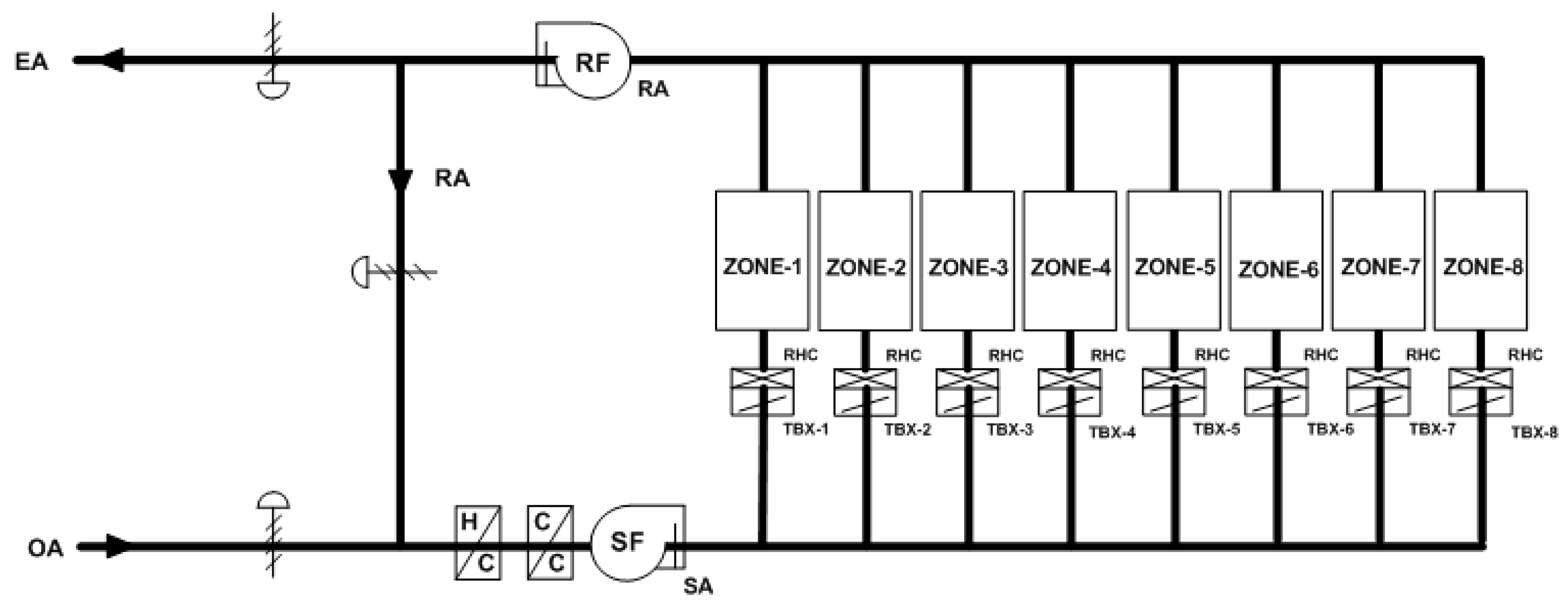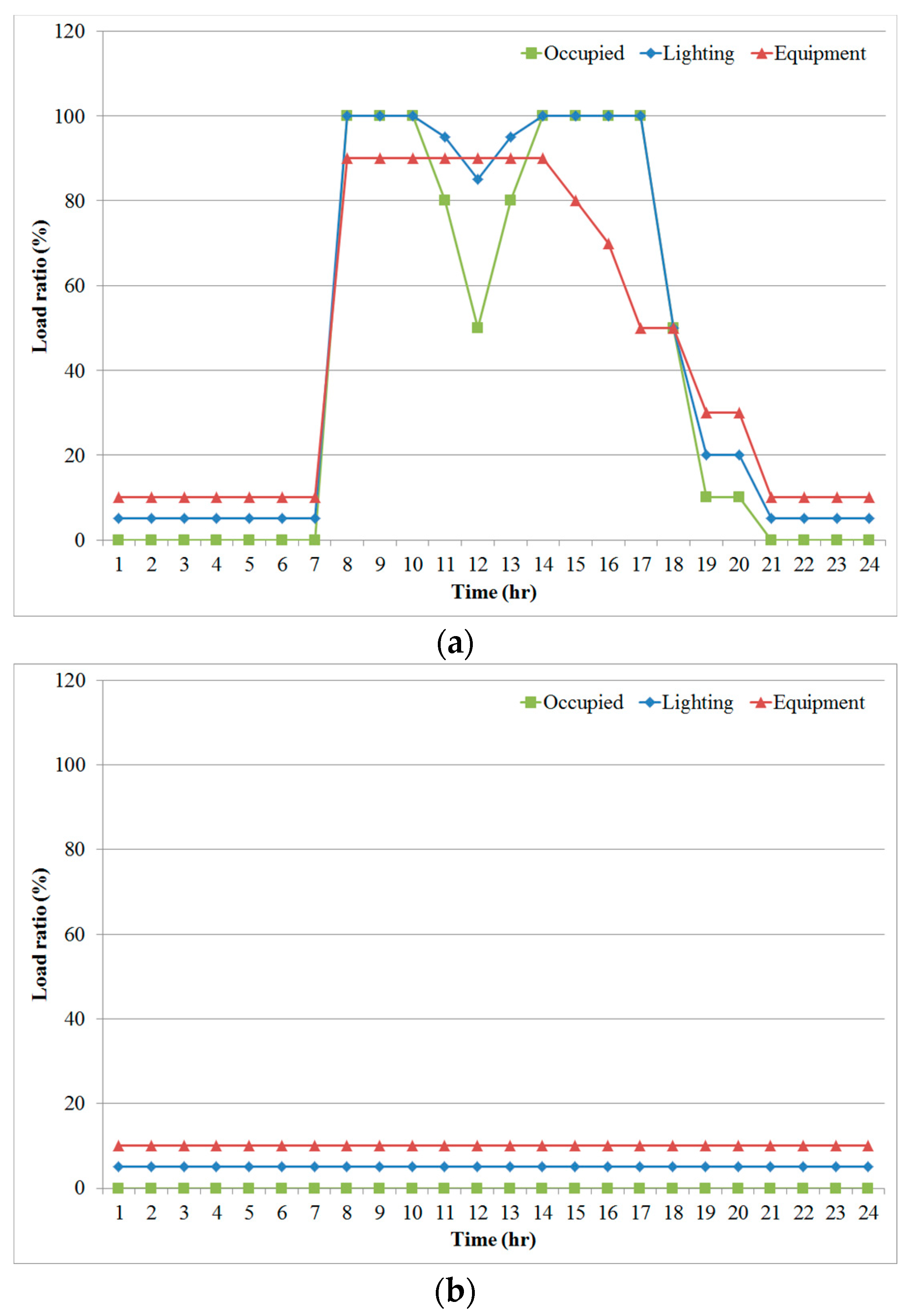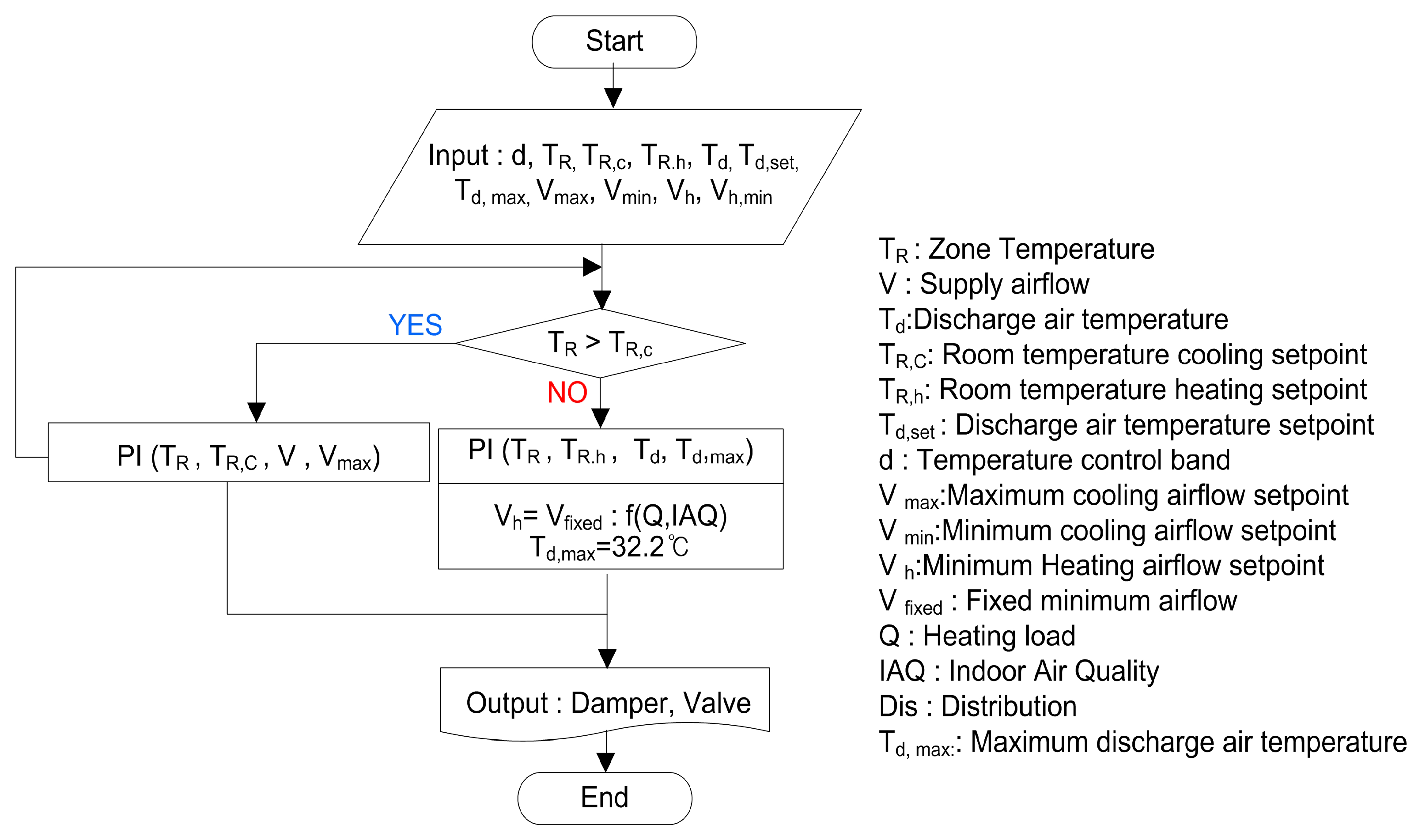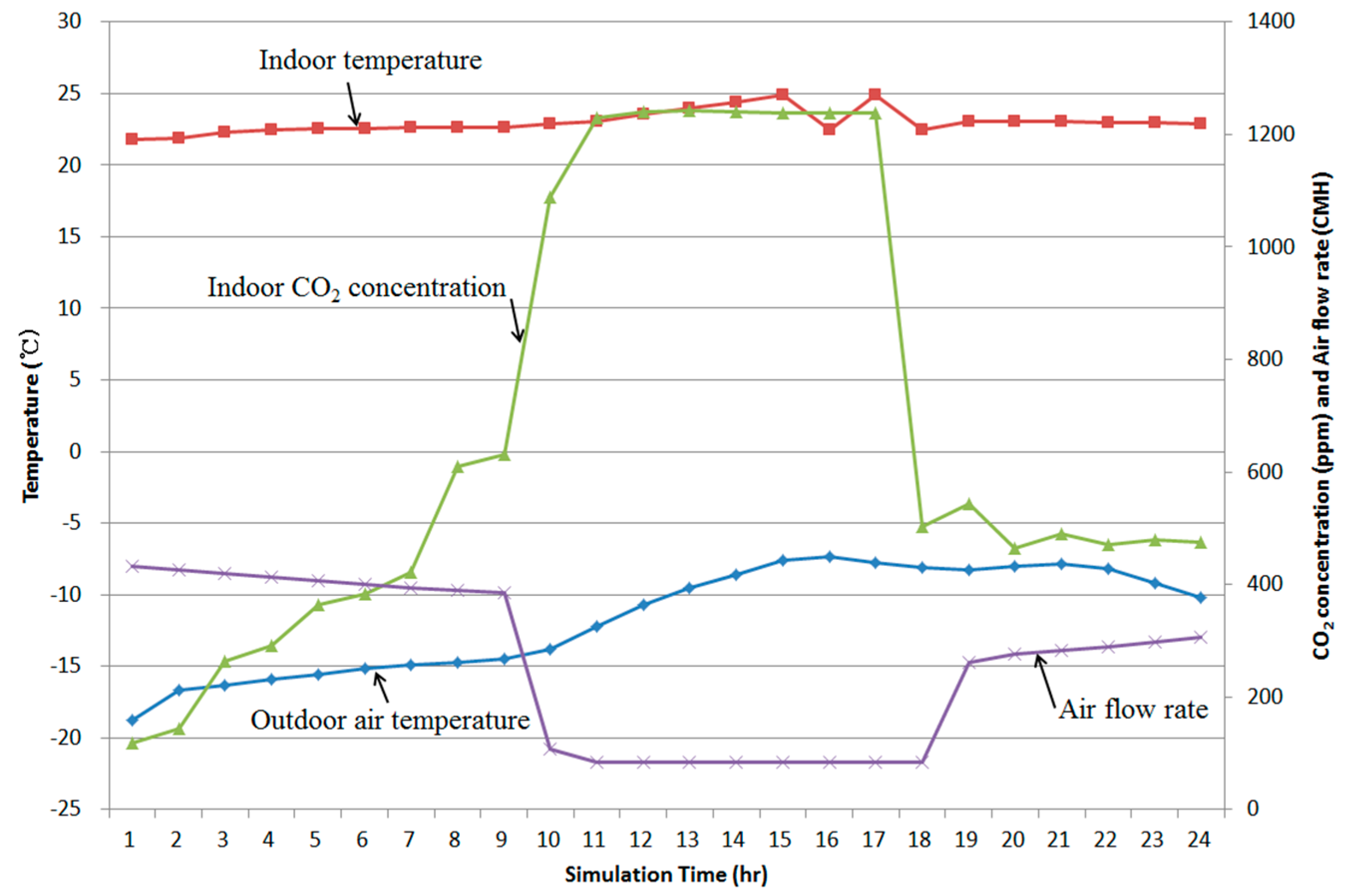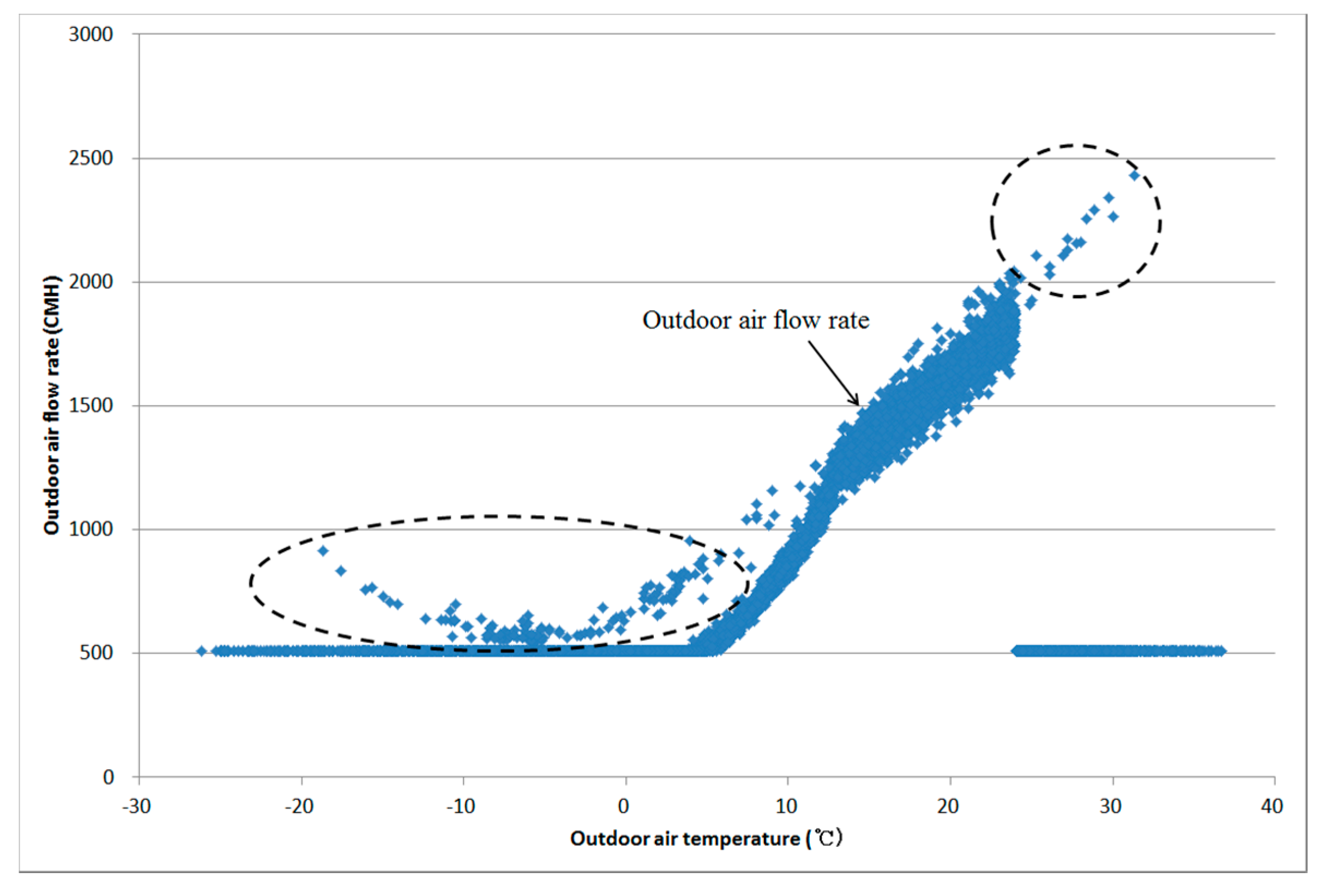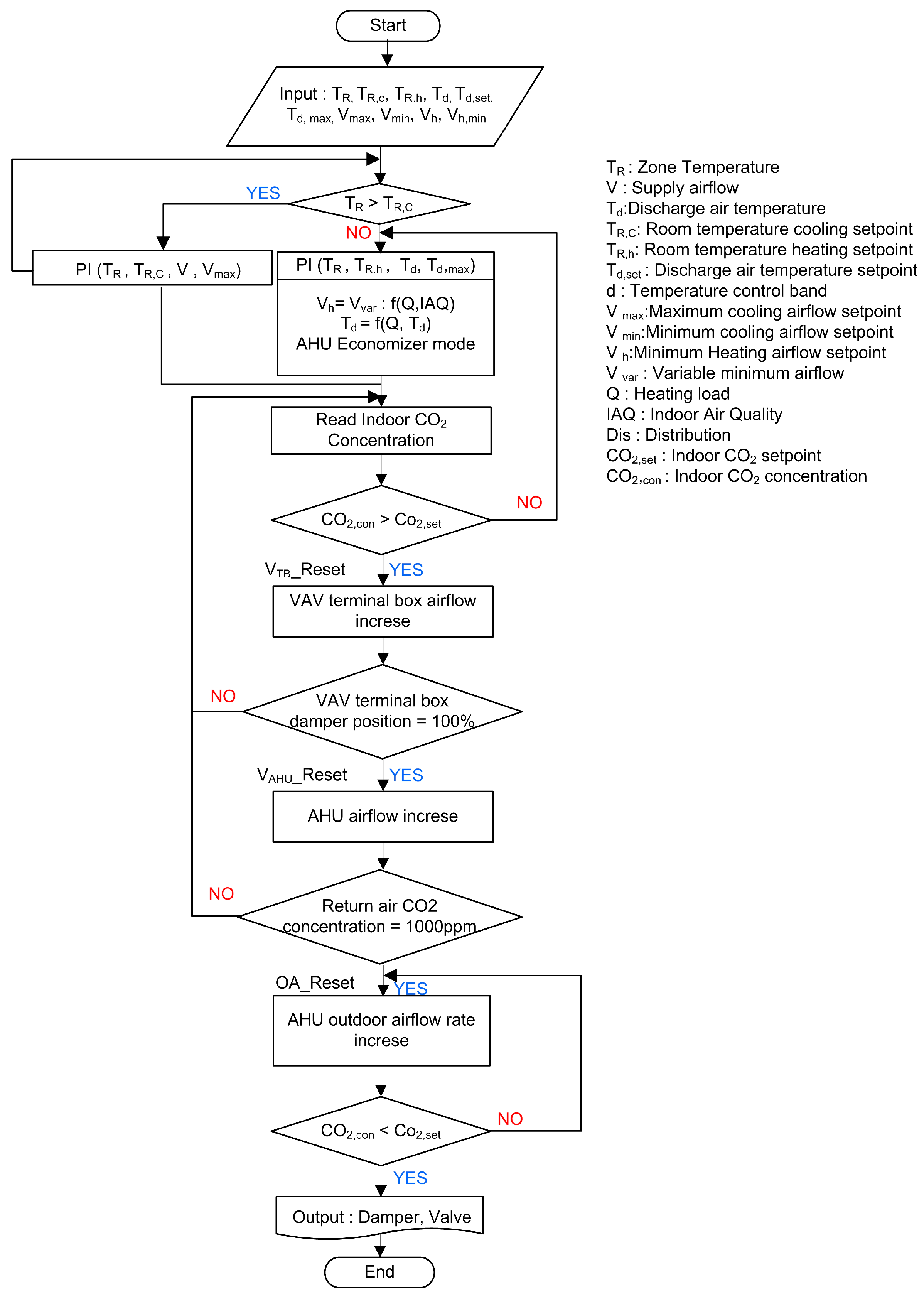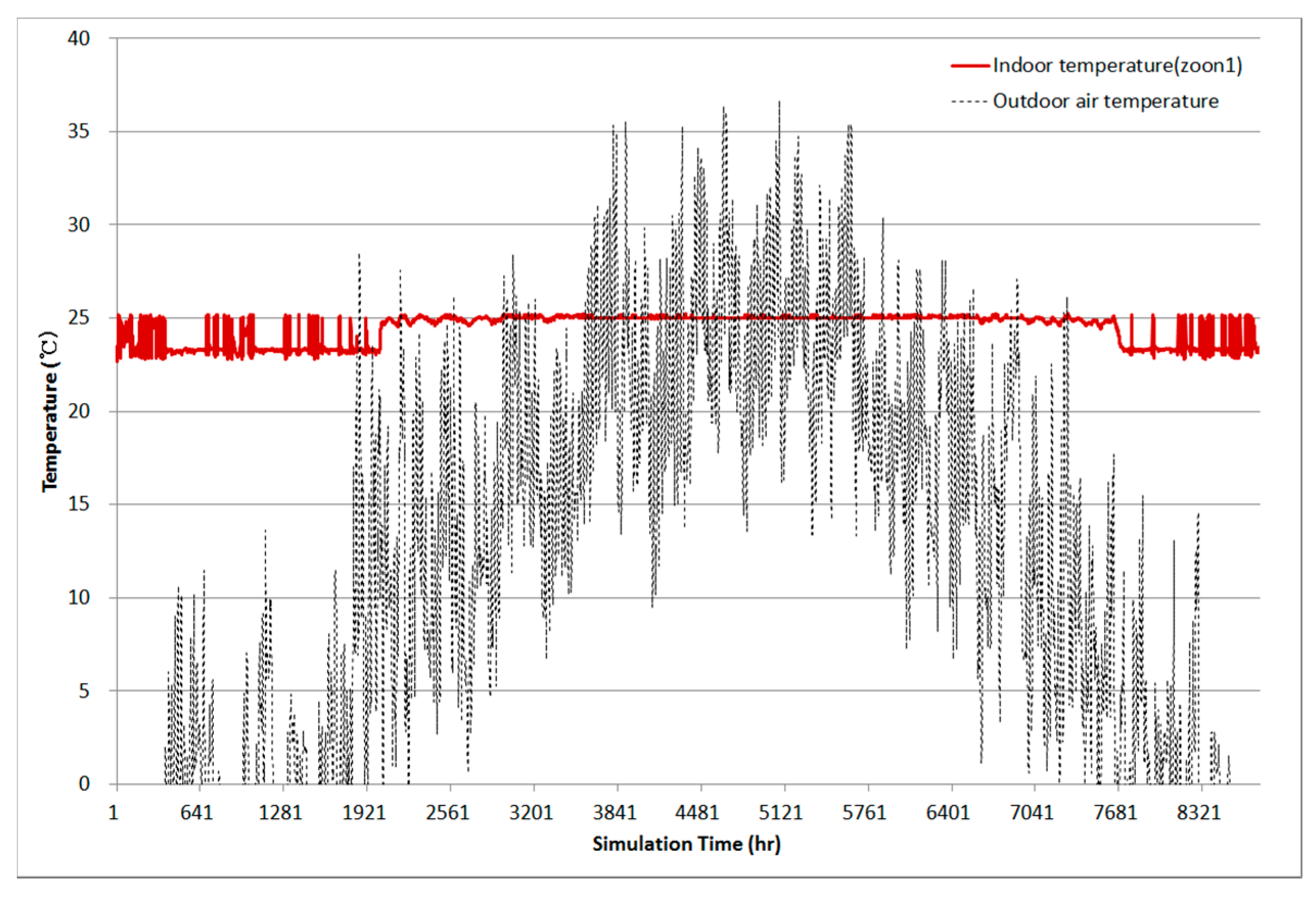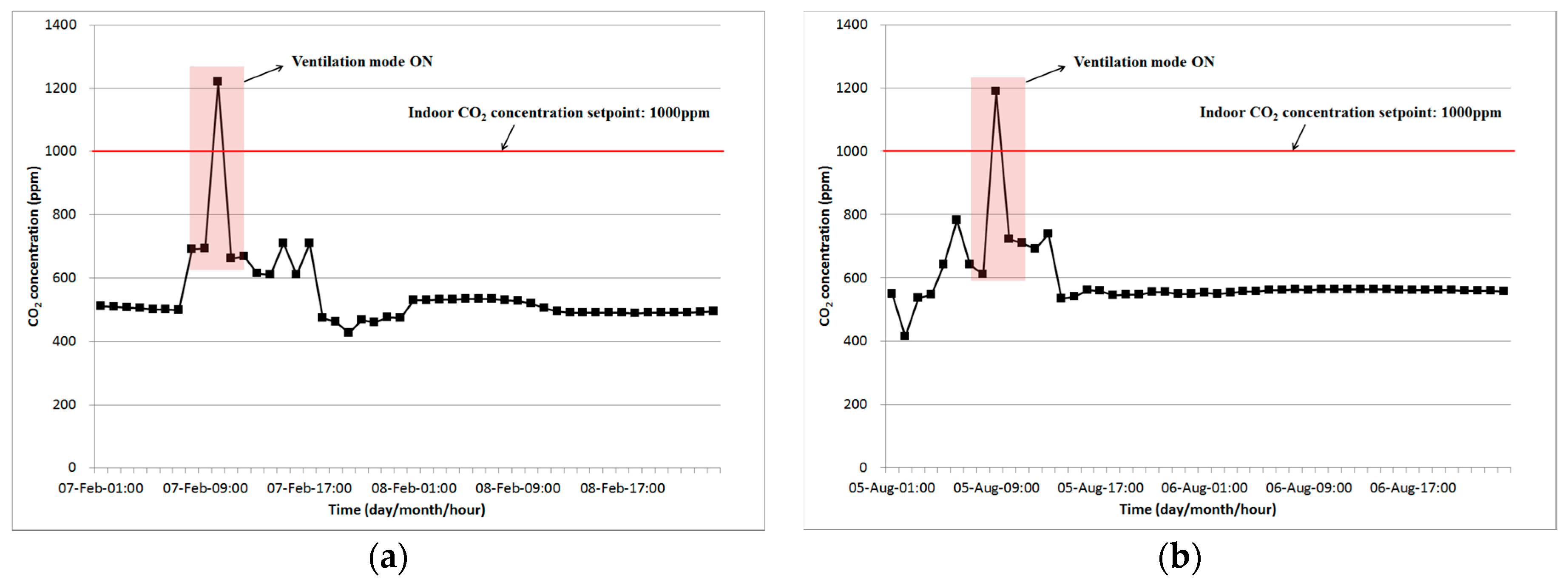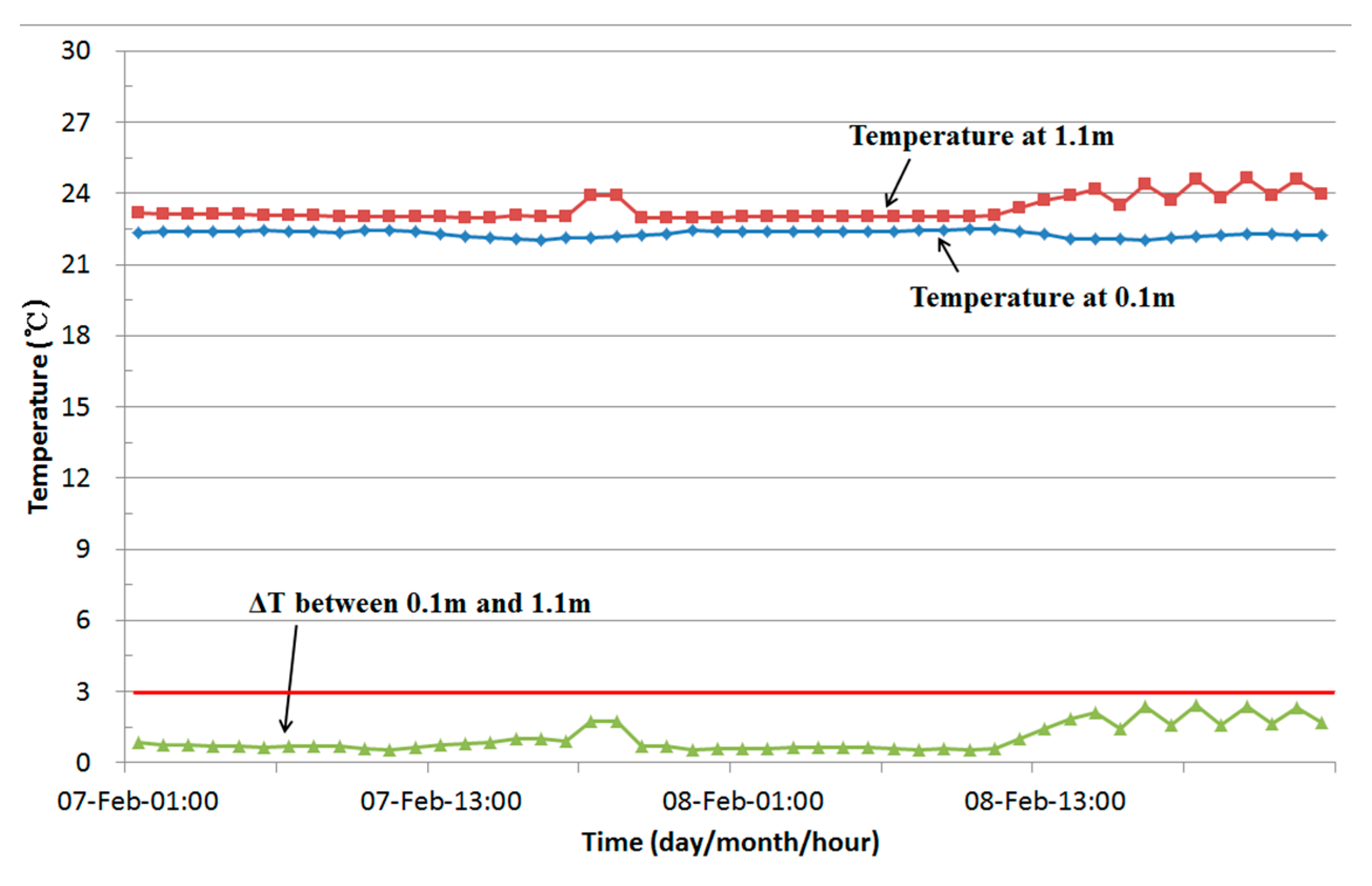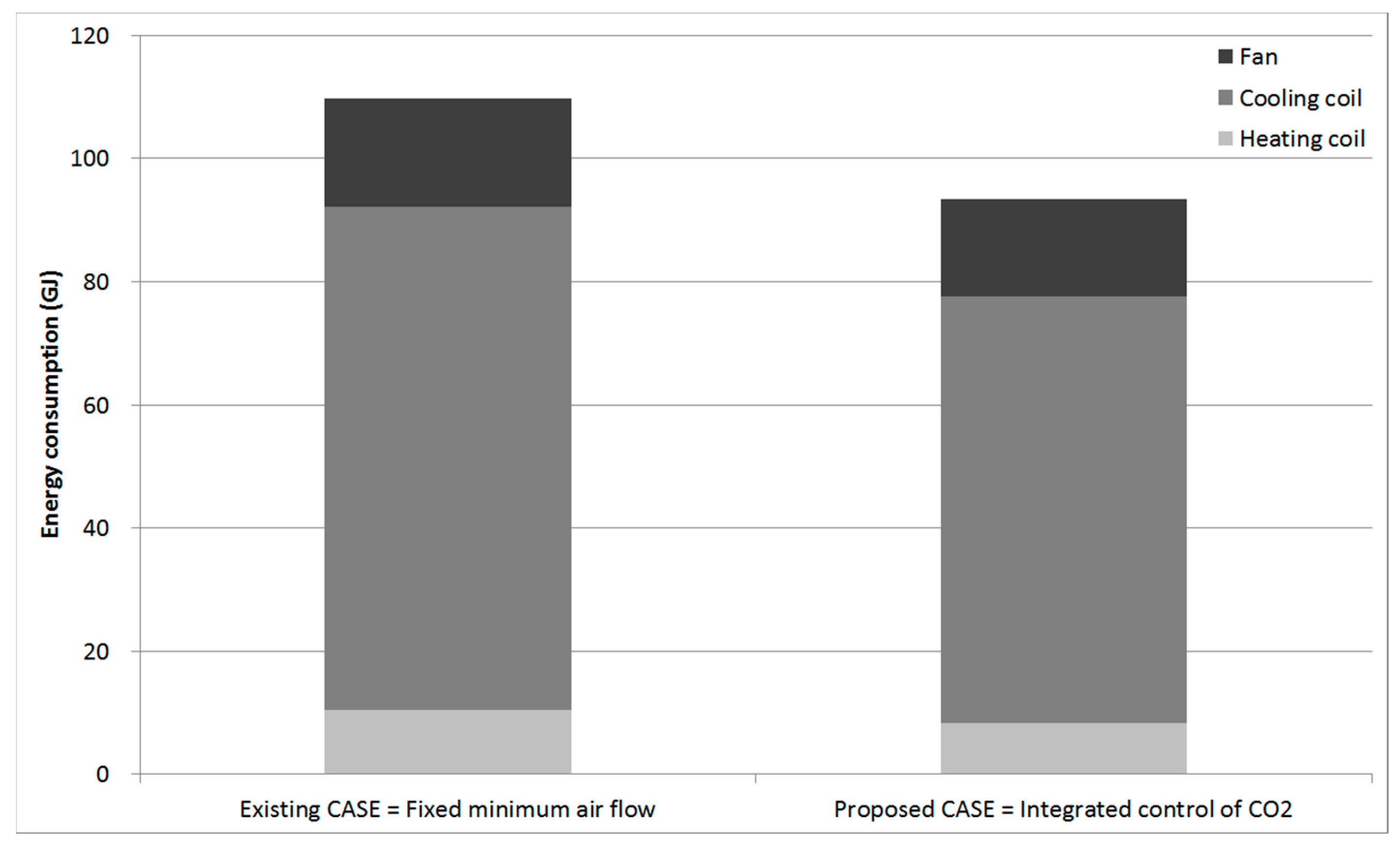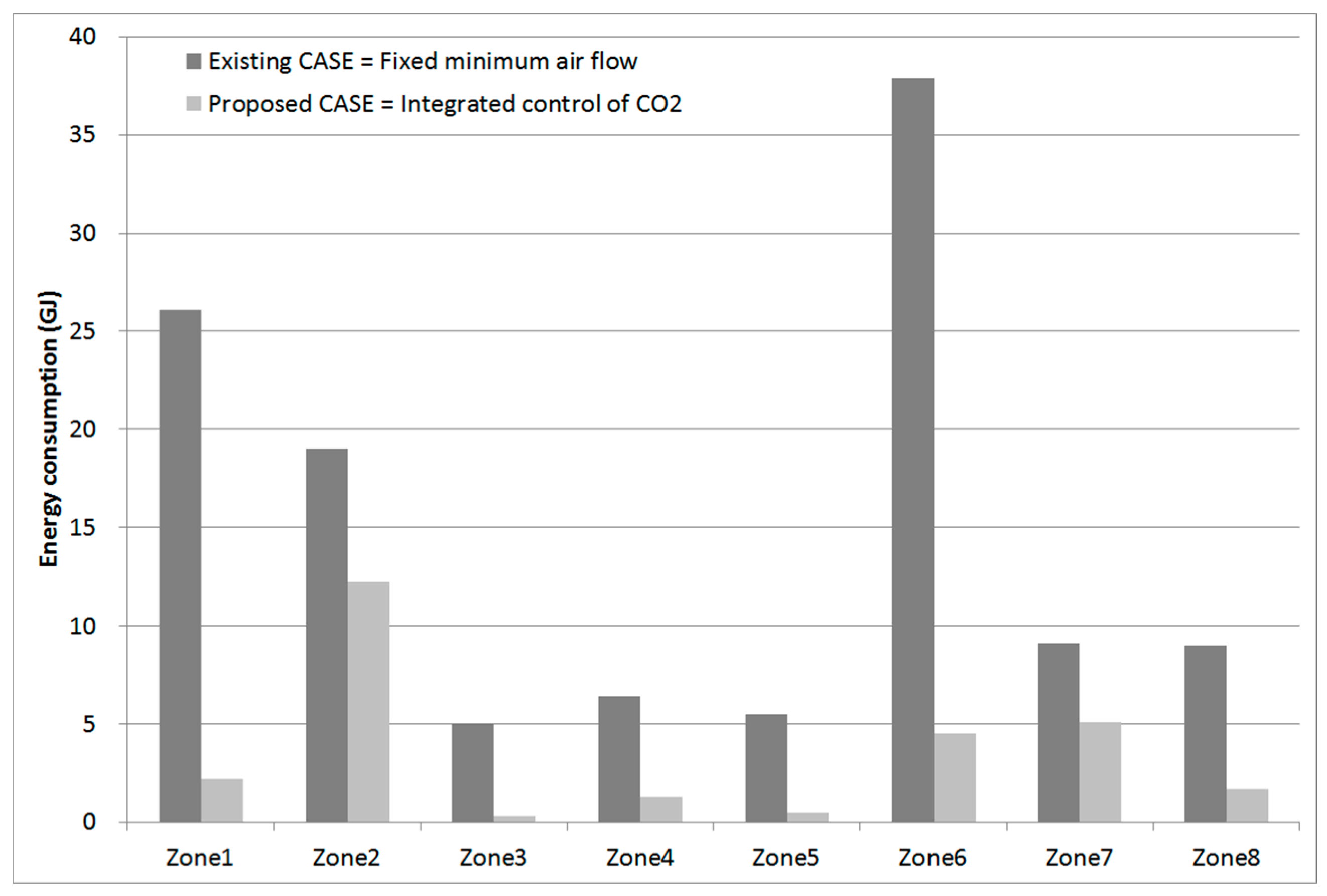1. Introduction
Buildings account for 25%, or more, of the entire amount of domestic energy consumption. Especially, mid-sized and large buildings continue to increase in energy consumption. These days, the reduction of greenhouse gases by energy saving is highlighted as an important issue. Accordingly, building facility systems should be operated to make sure that energy is used and saved efficiently.
The variable air volume system (VAV system) is adopted in many large buildings with increasing interest in energy saving and various studies have been performed for its efficient operation [
1]. The common air conditioning system is designed to perform air conditioning in a plurality of zones using an air handling unit (AHU). A terminal unit is located in the end terminal that supplies air conditioned air to each zone, which makes it necessary to control a terminal unit in each zone in order to control a VAV system in multi-zone.
The systematic use of optimization techniques has been introduced in the heating, ventilation, and air conditioning (HVAC) industry in recent years, with a substantial focus on VAV system optimal control [
2,
3,
4]. Yao et al. [
5] compared three kinds of air conditioning systems (VAV, Constant Air Volume, and fan coil system) in small office buildings in six different cities in China. The parameters in the model were obtained from either the field-testing data or the performance data provided by the product manual. The VAV system promised 17.0–37.6% potential energy savings, compared to the CAV system, and 4.6–10.2% potential energy savings, compared to the fan coil system, depending on the location of the city and climate. Engdahl and Johansson [
6] investigated the potential energy savings of a controlled supply air temperature of a VAV-based system by a comparison with a constant supply air temperature. The model results showed 8–27% potential energy savings for the varying supply air temperature case, compared to the constant supply air temperature case. Congradac and Kulic [
7] used genetic algorithms to optimize the return damper position such that the indoor CO
2 concentration can be kept as close to the desired level as possible and, at the same time, the lowest value of the valve (the lowest energetic use) can be achieved. Nassif and Moujaes [
8] proposed a new damper control strategy for the outdoor, discharge, and recirculation air dampers of the economizer in a VAV system. The strategy controlled the outdoor air by only one damper while keeping the others fully opened. The simulation results showed that the annual energy savings in the supply and return fans of an existing system, compared to the traditional strategy of three coupled dampers, were 12% and 5%, respectively. Cho [
9] examined the procedures for supply fan speed control, implementations and detailed descriptions of the control sequence, and operation comparisons. The results show electricity savings of 23% and gas savings of 19% over a six-month period. Cho [
10] identified the relationship between the supply air temperature and minimum air flow rate. In addition, the relationship between the supply air flow rate and temperature that minimizes energy consumption was suggested through proper supply temperature, stratification, and energy analysis according to the load that energy consumption can be minimized.
CO
2-based DCV have been proposed to determine the minimum outside air intake based on the number of occupants in the zone. The DCV for a single-zone have been studied by many researchers over the past few decades. Subsequently, Int-hout [
11] proposed a more detailed control method, such as proportional control and PID control. Pavlovas [
12] reported the results of a case study over a Swedish multifamily building aimed at evaluating the DCV system with different strategies. The outcome of the simulation shows that it would be possible to achieve energy savings using occupancy- and humidity-controlled ventilation to reduce the average ventilation flow rate while maintaining an acceptable indoor climate. Lu et al. [
13] examined a new control strategy of CO
2-based DCV for sports training arenas to address the challenge of control algorithms. The controlled CO
2 concentration using the new strategy was close to the CO
2 set point at each training session; therefore, the ventilation was optimized. Mysen et al. [
14] inspected 157 Norwegian classrooms to analyze the energy use over there different ventilation systems: CAV, DCV-CO
2, and infrared occupancy sensor-based demand-controlled system (DCVIR). Their results show that DCV-CO
2 and DCV-IR reduce the energy use due to ventilation in an average classroom to 38% and 51%, respectively, compared to the corresponding energy for a CAV system.
Cho and Liu [
15] determined the relationship between the supply temperature and minimum air flow rate at the terminal unit and presented a terminal unit air flow rate control method using step control to control the indoor load and ventilation requirement. Kang [
16] determined the relationship between supply temperature, air flow rate, and energy by height and presented a terminal unit air flow rate control method considering stratification and indoor air quality (IAQ). Kim et al. [
17] presented a method for controlling the supply temperature and air flow rate of a terminal unit to control stratification. However, preceding studies are based on a single zone. Therefore, it is considered to be additionally necessary to study methods for controlling a VAV terminal unit in a multi-zone.
Therefore, this paper proposed a VAV terminal unit control method in the multi-zone that meets the ventilation requirement to control IAQ. The proposed method controls IAQ through air flow rate control in case of the appearance of a space exceeding the IAQ control standard. The minimum outdoor air intake rate was based on the CO2-based model, which is determined depending on the indoor CO2 concentration. Moreover, this study composed a system using Trnsys17, a dynamic energy simulation tool, to make a comparison between the existing and proposed algorithms, and analyzed thermal comfort, IAQ, and energy consumption.

